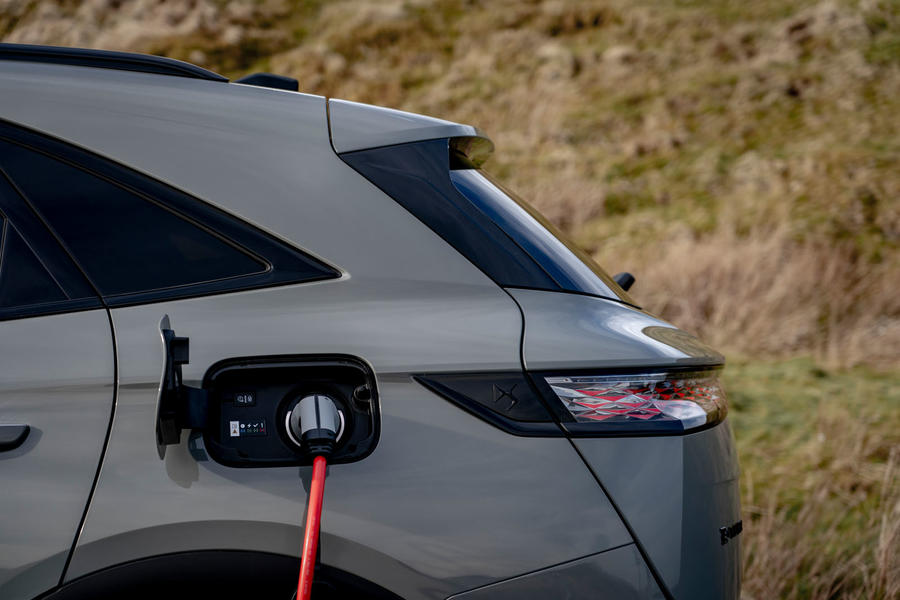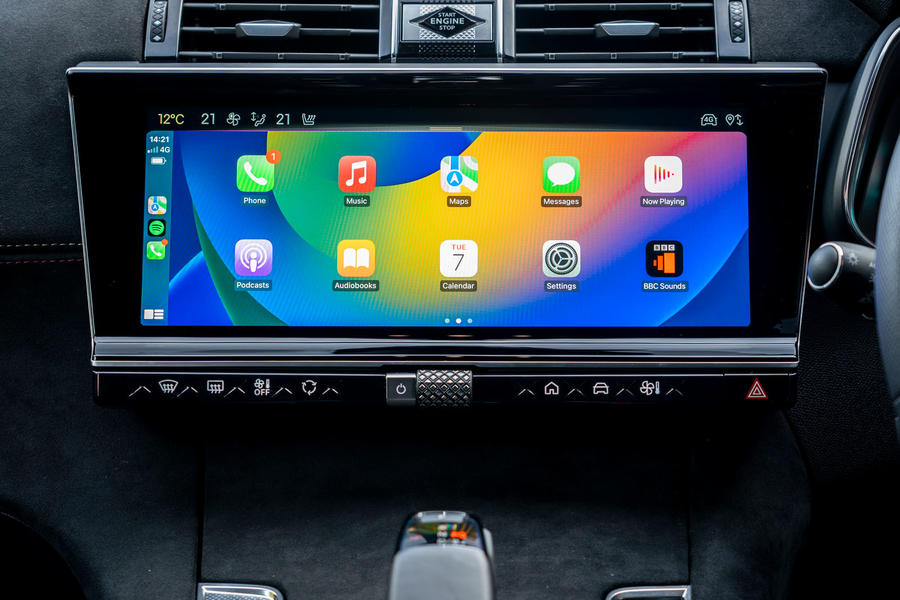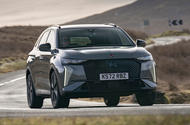France’s latest take on executive SUV lands in UK – we try the mid-ranking PHEV in its sportier guise
The DS 7 – favoured wheels of the French president – has been updated for 2023, and while we’ve already driven the new car abroad, it now arrives in the UK with a range that starts at about £36,000 but tops out at more than £60,000.
The most interesting derivatives are found at those extremities. At the top sits the new E-Tense 4×4 360, whose 355bhp, four-wheel-drive, bi-motor plug-in hybrid powertrain is essentially the same one found in the Peugeot 508 PSE, a performance saloon we rate highly.
Meanwhile, the entry-level BlueHDi 130 is a front-driven 1.5-litre diesel whose underwhelming 10.7sec 0-62mph time ought to be in part outweighed by fine cruising economy. Given you can still pick mid-ranking but convincingly plush Rivoli trim, it could be a bit of a motorway hero – lavish within, efficient and decently spacious, all for less than £40,000.
Our first taste, though, comes from the mid-ranking E-Tense 225, a PHEV that pairs a petrol engine with an electric motor for a combined 221bhp and 266lb ft, all of it going through the front wheels via an eight-speed automatic gearbox.

This powertrain isn’t the most engaging, but then even BMW has failed to get much enjoyment from a low-capacity PHEV powertrain. It is effective, though. Ask for gentle roll-on acceleration and you really do get a clean, electric-enhanced response; ask for everything and, once the gearbox has got itself in order, performance is strong enough for easy overtakes.
With an additional motor on the rear axle, the E-Tense 300 is brisker still, albeit only marginally, while the E-Tense 360 ought to feel truly rapid by class standards. Electric-only range has also increased on the PHEVs, thanks to a bigger battery. The E-Tense 225 gets up to 43 miles, and under light throttle loads in Hybrid mode it slips in and out of EV running with barely noticeable ease.
It might surprise you to learn that the 7 also handles tidily. Getting punted down British B-roads isn’t very on-brand when DS’s calling card reads ‘Parisian savoir-faire’, but crisp turn-in and the back axle’s ability to neatly load up in unison with the front stands this near-1800kg SUV in good stead. It can be hustled, and the E-Tense 300 is less agile and fun than this front-driver.
On the other hand, that 4×4 does ride just a bit more sweetly – but no matter the derivative, the adaptive suspension (whose responses are informed by cameras in some) remains a conspicuous weak point. The long-wave gait is absorptive and reasonably well controlled, but you’re not isolated well enough from poor surfaces, ruts and bumps.
Wind noise is pronounced, too, and the seats have inadequately supportive bolstering. These kinds of details are what make the 7 feel 10% shy of where it needs to be. Less appealing still is the heavy use of Alcantara on Performance Line trim. The 7’s slick cascading exterior LED lighting signature and over-ornamental detailing hardly scream ‘flocked dash’, yet here it is.

At least you have a choice. The soft leather of the non-sporty trims (Rivoli, Opera and La Première) is so much more at home here and transforms the ambience into something more appropriate for what DS is trying to be. Good visibility and slick phone integration further enhance that sense of ease and comfort.
The 7 also now has DS’s Iris infotainment system. You’ll like the touchscreen’s crisp graphics and low latency, but what you may well like even more is that it’s sensibly sized and doesn’t dominate the cockpit.
But broadly, the 7 seems set to stay a fringe player in a class that also includes the Audi Q3 and Volvo XC40. It has likeable qualities, some of them in unexpected places, but its approach to offering refinement and opulence still feels more superficial than fundamental.
Source: Autocar
